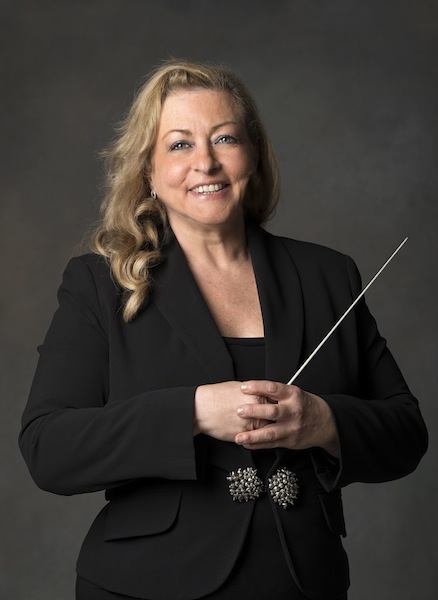Pro Arte Chamber Orchestra serves up choice rarities (and familiar Beethoven) in style
The Pro Arte Chamber Orchestra’s 40th-anniversary season continued on Sunday afternoon at Newton’s First Baptist Church. Conductor emerita Gisèle Ben-Dor led a program that paired two rarities by Charles Gounod and Eric Ewazen with Beethoven’s evergreen Symphony No. 5.
The Gounod on offer was the 1885 Petite Symphonie in B-flat for winds. Written for flautist Paul Taffanel’s Chamber Music Society for Wind Instruments, the Symphonie calls for bantam forces (two each of oboes, clarinets, horns, and bassoons, plus a flute), but there is nothing slight about the invention of Gounod’s writing.
The four movements follow the standard format, the brisk outer ones framing an Andante and a jaunty scherzo. Throughout, there’s a strong emphasis on instrumental colors and striking combinations, from the oboe/clarinet/horn melody in octaves during the first-movement introduction to the lilting episodes for flute, oboe, and clarinet in the Scherzo’s trio, and the Haydnesque call-and-response between pairs in the finale.
The flute writing is particularly noteworthy; there are mostly short solos in the first movement, followed by a substantial lyrical essay in the second and involved, agile episodes over the last two.
Pro Arte principal flute Anne Bobo handled them all with aplomb. Her account of the second movement was burnished and liquid, her playing in the others lithe and supple. Ben-Dor drew warm, fervent playing from the whole ensemble, the music’s deep reservoirs of charm generously tapped.
Ewazen’s Concerto for Trumpet and Strings marked a couple of homecomings: one for the piece itself, another for former Pro Arte principal trumpet (and current Oregon Symphony principal) Jeffrey Work. Adapted at Work’s request by Ewazen from his 1991 Quintet for Trumpet and String Quartet, it was premiered by him with Pro Arte in 1998.
The first movement features a recurring, pulsing orchestral accompaniment over which the soloist plays a flowing solo. The second is marked by billowy textures and wave-like melodic gestures. In the third, a series of brooding melodies passed between trumpet and orchestra builds to a mournful chorale. The finale picks up in its expressive shadow, with menacing fanfares and ostinatos that eventually lead to a short, accompanied cadenza. That serves to clear the air and the concerto ends with some bright echoes of the second movement.
Overall, it’s a lovely, somewhat imitative piece (there are frequent echoes of Copland and Vaughan Williams) but it’s concise, accessible (in a good way), and well-crafted. While the trumpet is the star, Ewazen’s writing for strings is always involved and the piece has no real dry spots. (Though it might be nice to have an “upbeat” ending that involved something other than an abrupt major-key cadence.)
Work easily navigated the solo part, his pealing, golden tone perfectly suited to the music’s songful impulses. Ben-Dor led the orchestra in an accompaniment that, in the outer movements, was bitingly rhythmic, and sang with doleful passion in the “Elegy”
The performance of Beethoven’s Fifth Symphony that followed after intermission offered many of those same characteristics, though not always as consistently.
Here Ben-Dor’s interpretation was, at times, too straightforward. The opening movement, for instance, often sounded deliberate. And much of the third movement was downright stodgy. Granted, there were moments of cathartic release – the climax of the first movement’s development, the vigorous round dance in the middle of the third – but too much portentousness can breed cliché. Here and there, Sunday’s reading did just that.
Tellingly, when Ben-Dor let things open up, the results stood in sharp relief. The second movement came across with uncommon fluency, its constantly varying refrain burbling with wit and color. And the finale was truly exciting: brisk, blazing, overflowing with exuberance. In this context, even the extended coda didn’t quite overstay its welcome, sounding like a genuinely earned triumph on Sunday, as it should.
Throughout the afternoon, the orchestra boasted plenty of power. In the Beethoven, their playing was brawny and bright, which fit the extroverted parts of the piece well, though some contrasting warmth might have helped parts of the first movement sing to greater effect. A couple of tentative transitions aside, the string playing in the Ewazen was fully assured, as were the winds in the Gounod, which sounded about as brilliant and effortless as one could hope for.
Posted in Performances






